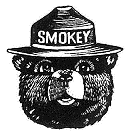U.S. Department of Agriculture: Forest Service -- National Agroforestry Center
Document Type
Article
Date of this Version
2017
Citation
Forest Ecology and Management 384 (2017) pp. 26–33.
Abstract
Forest understories across the northern United States (US) are a complex of tree seedlings, endemic forbs, herbs, shrubs, and introduced plant species within a forest structure defined by tree and forest floor attributes. The substantial increase in white-tailed deer (Odocoileus virginianus Zimmerman) populations over the past decades has resulted in heavy browse pressure in many of these forests. To gain an objective assessment of the role of deer in forested ecosystems, a region-wide forest inventory across the northern US was examined in concert with white-tailed deer density information compiled at broad scales. Results indicate that deer density may be an additional driver of tree seedling abundance when analyzed along with stand attributes such as above ground biomass, relative density, and stand age. Tree seedling abundance generally decreased as deer density increased above 5.8 deer km2 for all forest type groups with the exception of oak-dominated forests. Findings indicate that introduced plant species, of which 393 were recorded in this study, increased in areas with higher deer density. The abundance of white-tailed deer is just as important as forest stand and site attributes in the development of forest understories. Given the complexity of forest and land use dynamics across the northern US, this study provides directions for future research as more data linking forest-dependent wildlife and forest dynamics at regional and national scales become available.
Included in
Forest Biology Commons, Forest Management Commons, Other Forestry and Forest Sciences Commons, Plant Sciences Commons


Comments
U.S. government work.